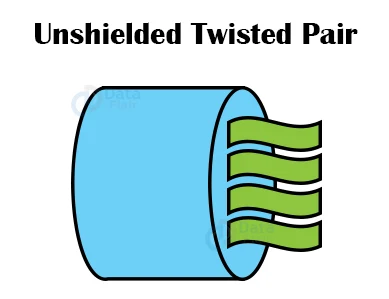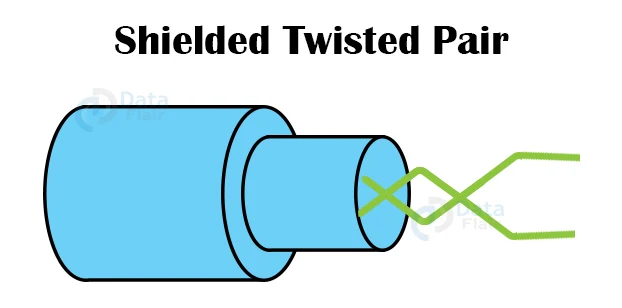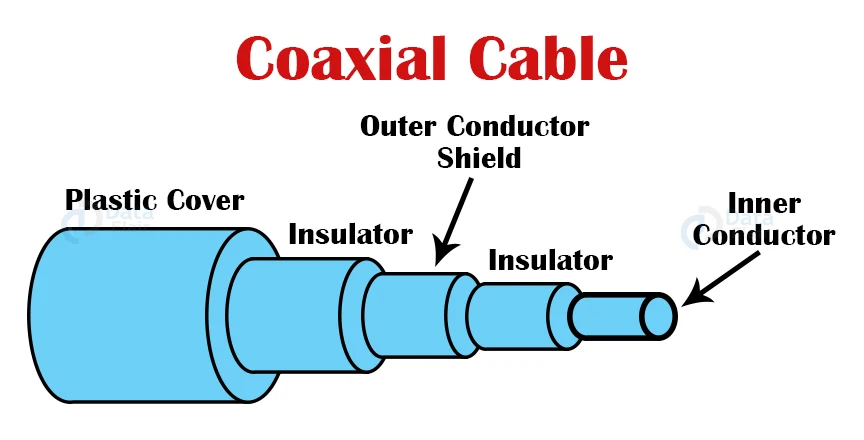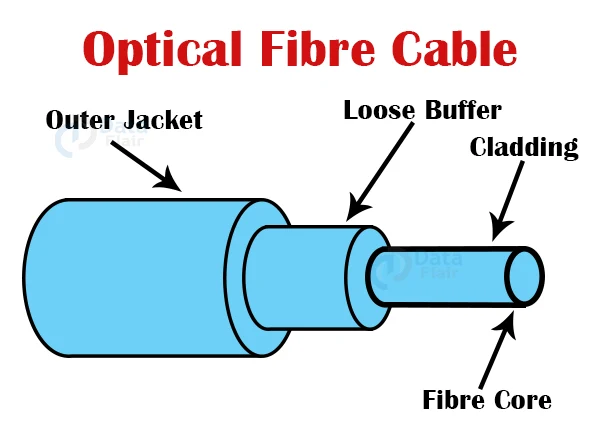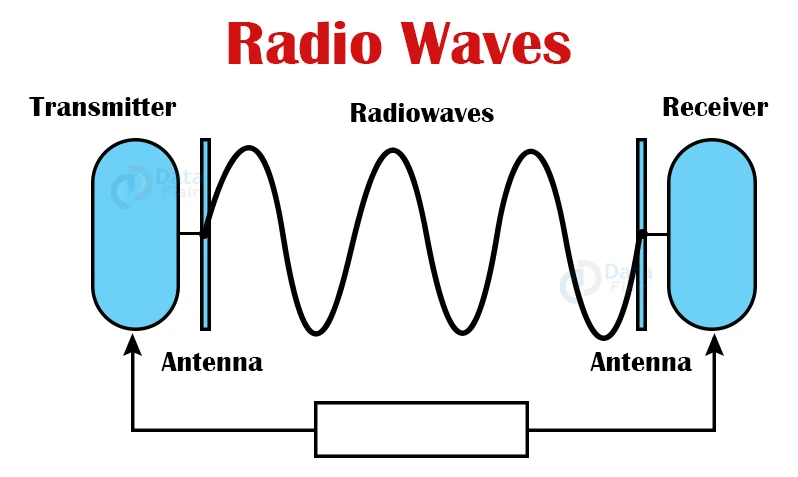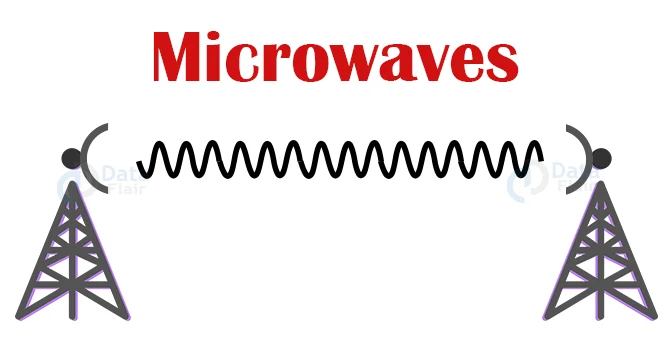Transmission Media in Computer Network
FREE Online Courses: Your Passport to Excellence - Start Now
A transmission medium is a route that transmits information from a source to a receiver. Transmission mediums lie underneath the physical layer and the physical layer regulates them. Communication channels are another name for transmission medium.
There are 2 types of transmission media:
- Guided
- Unguided
1. Guided Transmission Media:
Bounded media and wired media are other names for guided transmission media. They consist of cables or wires that transfer data. They go by the name “guided” because they act as a physical link between the transmitter and recipient devices. The physical limitations of the medium limit the signal flowing via these mediums. They are:
- Secure high-speed links.
- Generally used for shorter distances.
Some of these most popular guided transmission media are:
a. Twisted Pair Cable:
This is the most widely used transmission medium cable. It consists of two distinct insulated conductor wires coiled around each other. Several similar pairs are usually packed together in a protective sheath.
There are 2 broad types of twisted-pair cables:
i. Unshielded Twisted Pair:
- Provides a high speed link.
- The most affordable.
- Simple to set up.
- External interference is a possibility.
- When compared to Shielded Twisted Pair, it has a lower capacity and performance.
Unshielded Twisted Pair categories:
- Category 1: Category 1 twisted pair cables find use in low-speed telephone data transmission.
- Category 2: It has a maximum bandwidth of 4Mbps.
- Category 3: It has a maximum bandwidth of 16Mbps.
- Category 4: It has a maximum bandwidth of 20Mbps. As a result, it is suitable for long-distance communication.
- Category 5: It has a maximum bandwidth of 200Mbps.
Advantages:
- It is inexpensive.
- The unshielded twisted pair is simple to install.
- It is suitable for high-speed LAN.
Disadvantages:
- Because of attenuation, this cable finds use in connectivity solutions for short distances.
ii. Shielded Twisted Pair:
- Installation and manufacturing are both somewhat challenging.
- Pricier.
- When compared to Unshielded Twisted Pair, it performs better at greater data rates.
- Faster in comparison.
Characteristics:
- The price of insulated twisted pair cable is neither extremely expensive nor very low.
- It has greater attenuation.
- Its insulation allows for a greater data transmission rate.
Advantages:
- STP installation is simple.
- It has a larger capacity than unshielded twisted pair cable.
- Higher rate of transmission.
Disadvantages:
- It is more costly than UTP and coaxial cable.
- It has a greater rate of attenuation.Applications:
- Local Area Networks
- Telephone Lines
b. Coaxial Cable:
It features an exterior plastic covering and two parallel conductors, each with its own insulated protective cover. It operates in 2 ways: baseband and broadband.
Applications: Coaxial cables are commonly used in cable TV and analogue television networks.
i. Advantages:
- High bandwidth.
- Less susceptible to noise.
- Very cheap to install.
- Easy to install and upgrade.
ii. Disadvantages
- If there is a failure of the cable, the whole network may fail.
c. Optical Fibre Cable:
It works on the principle of light reflection through a core composed of glass or plastic. The cladding surrounds the core, and the cladding is a less thick glass or plastic covering. It finds use in large-volume data transfer.
It is possible for the cable to be unidirectional or bidirectional.
Advantages and Disadvantages of optical fibre cable:
i. Advantages:
- Does not rust or corrode since there is no metal.
- Can transmit data at very high speed.
- Supports high bandwidth.
- There is less signal attenuation.
- Resistance to electromagnetic interference.
ii. Disadvantages:
- Installing and maintaining it is difficult.
- Fragile and expensive.
iii. Elements of optical fiber cable:
- Core: The core of an optical fiber is a small strand of glass or plastic. A core is the part of the fibre that transmits light. The amount of light transferred into the fibre depends upon the area of the core.
- Cladding: Cladding refers to the concentric layer of glass. The primary function of the cladding is to produce a lower refractive index at the core interface, causing reflection within the core and allowing light waves to pass through the fibre.
- Jacket: A jacket is a type of protective layer made of plastic. The primary function of a jacket is to retain fibre strength, absorb stress, and provide further fibre protection.
Applications of Fibre Optic cables:
- Backbone Networks
- Some local area networks and cable networks.
d. Stripline cable:
It is also known as a waveguide and it transmits high-frequency waves using a conducting substance.
This conductive substance is placed between two ground plane layers that are often short-circuited to offer EMI immunity.
e. Microstripline cable:
A dielectric layer separates the conducting material from the ground plane in this case.
f. Power Lines:
Layer-1 (Physical Layer) technology that uses power cables to transmit data signals is known as power line communication (PLC). Modulated data is sent over the cables in a PLC. The data is de-modulated and interpreted by the receiver on the other end.
g. Magnetic Media:
Even before networking, one of the most convenient ways to transfer data from one computer to another was to save it on storage media and physically transfer it from one station to another. Magnetic media is useful when the amount of data to be transferred is very large.
2. Unguided Transmission Media:
Electromagnetic signals can also be transmitted without the use of a physical medium. These are also known as wireless or unbounded transmission media.
Some properties of unguided media are:
- Less secure than guided media.
- Used for longer distances.
Types of UnGuided Transmission Media:
a. Infrared:
When there is a need for very short-range communication, infrared waves are used. However, they fail to penetrate any walls/obstacles in the way of the signal.
The frequency ranges from 300 GHz to 400 THz.
Characteristics of infrared transmission:
- It has a large bandwidth, thus the data rate will be quite high.
- Infrared waves are unable to permeate the walls. As a result, infrared communication in one room cannot be disrupted by surrounding rooms.
- Infrared communication is more secure and also causes less interference.
- Outside the building, infrared communication is unreliable because the sun’s rays interfere with the infrared radiation.
Advantages:
- Cost-effective and cheap.
- Large bandwidth.
- Easy to install.
- Can be operated without any licence.
Disadvantages:
- Cannot cross barriers.
- Long-range communication is not possible.
Applications:
- Short-range communication
- Communication between keyboards, PCs and mouse.
b. Radio waves:
Very commonly used and very simple to generate. These types of waves can pass through obstacles easily. Two antennas are used, one for the transmitting station and one for the receiving station (these antennas need not be aligned).
The frequency ranges from 3 kHz to 1GHz.
Advantages of Radio Transmission:
- Radio transmission is mostly utilised for wide area networks and mobile phones.
- Radio waves may penetrate barriers and cover a broad area.
- Faster transmission speed.
Disadvantages:
- Regulation of radio spectrum, thus it is expensive to buy.
- Cannot permeate matter very well.
- Cannot travel above the horizon because of the curvature of the earth.
Applications:
- AM and FM Radio
- Cordless phones
c. Microwaves:
It is a line-of-sight transmission, which means that the transmitting and receiving antennas must be correctly aligned. The distance reached by the signal is proportional to the antenna’s height. These are mostly utilised for mobile phone communication and television broadcasting.
The frequency ranges from 1 GHz to 300GHz.
Characteristics of microwave:
- Frequency range: 4 to 23 GHz.
- Bandwidth: It provides bandwidths ranging from 1 to 10 Mbps.
- Short distance: Suitable for short distance communication.
- Long distance: It is costly since a larger tower is required for a longer distance.
- Attenuation: Weakening of a signal is referred to as attenuation. Antenna size can change attenuation.
Advantage of microwave transmission:
- Microwave transmission is cheaper than cable transmission.
- It does not necessitate the acquisition of land since the installation of cables does not necessitate the acquisition of land.
- Microwaves are more convenient in places where installing cables is difficult.
- Microwave transmission can be used to communicate across seas.
Disadvantages of microwave transmission:
- Eavesdropping: Eavesdropping makes communication unsafe. Any rogue user with its own antenna can capture the signal in the air.
- Out of phase signal: Signal may shift out of phase.
- Weather condition: Any environmental disturbance may cause the signal distortion.
- Bandwidth allocation: Less bandwidth is available.
Applications;
- Satellite Networks
- Cell phones
d. Light Transmission:
Light or optical signalling is the most powerful electromagnetic spectrum that may be utilised for data transmission. LASER is used to do this.
Because of the frequency at which light travels, it tends to move in a straight path.
As a result, the transmitter and receiver must be in direct line of sight. Because laser transmission is unidirectional, the laser and photodetector must be deployed at both ends of the connection. Because laser beams are typically 1mm broad, aligning two distant receptors, each pointed to the laser’s source, is a precise task.
Factors to consider when choosing transmission media:
1. Bandwidth: Assuming all other variables stay constant, the bigger the bandwidth of a media, the faster the data transmission rate of a signal.
2. Transmission impairment: When the received signal differs from the sent signal owing to transmission impairment. Signal quality will be reduced as a result of transmission flaws.
3. Interference: Interference is described as the process of interrupting a signal as it travels through a communication channel as a result of the addition of some unwanted signal.
4. Radiation: We need to choose a medium that minimises signal leakage.
5. Attenuation: A transmission medium must also be chosen so as to minimise the signal loss over long distances.
6. Noise Absorption: External noise may impact the medium if it is not properly insulated against such interference.
Causes of Transmission Impairment:
1. Attenuation: Attenuation refers to the loss of energy, which occurs as the intensity of the signal diminishes as the distance increases, resulting in the loss of energy.
2. Distortion: Distortion happens when the form of the signal changes. This form of distortion is investigated using various signals with varying frequency. Because each frequency component has its own propagation speed, they arrive at various times, resulting in delay distortion.
3. Noise: When data is sent through a transmission media, an undesired signal is added to it, resulting in noise.
Summary
In this article, we looked at the various forms of transmission media that are available to us currently. We looked at the two broad types of transmission media which are Guided and Unguided Transmission Media. We also covered the factors to consider when choosing a transmission media, along with the causes of attenuation in these transmission media.
Your 15 seconds will encourage us to work even harder
Please share your happy experience on Google
